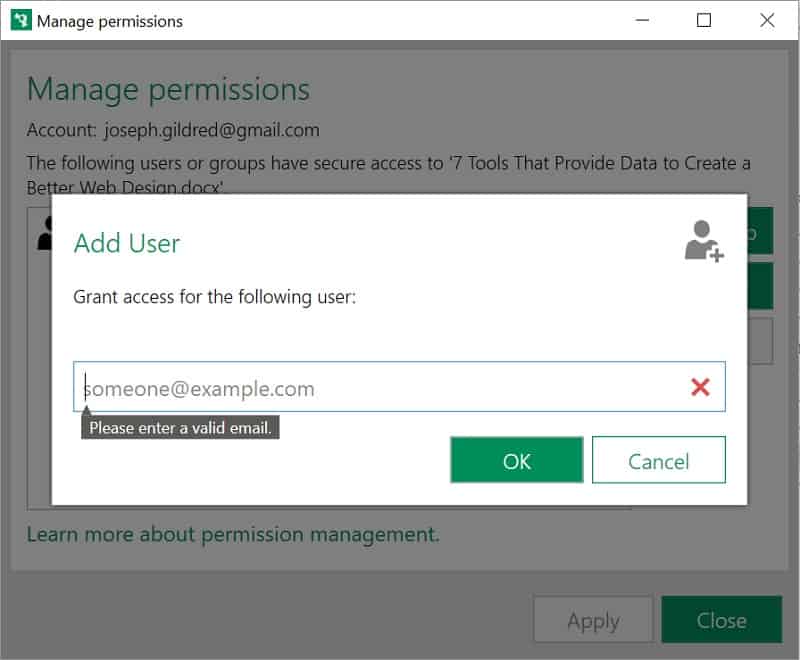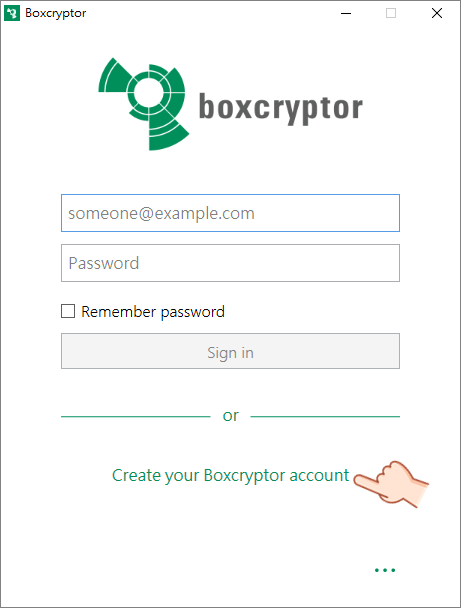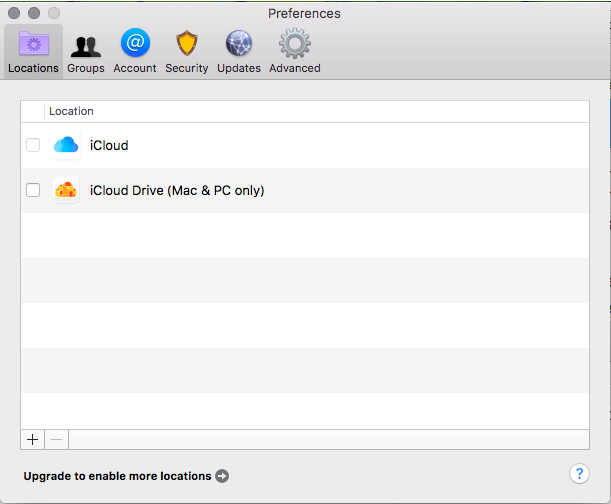Boxcryptor is file-encryption software designed and created specifically for cloud use, with support for all major cloud-storage providers, as well as any cloud-storage provider that follows the Web Distributed Authoring and Versioning (WebDAV) standard. With the increasing number of security threats, data and identity privacy are becoming more. If you want to keep your data secure, you’ll need to couple iCloud with a service like Boxcryptor to encrypt your files for you (see our Boxcryptor review). Zero-Knowledge Encryption.
- Updated on 2021-01-29 to iCloud
There are many scenarios when you find yourself in the need of using the iCloud DNS bypass method. For instance, you have lately bought a second-hand iOS device with an iCloud activation lock enabled or you have forgotten your iCloud password. In either case, you won’t be able to use the iCloud locked device. Of course, you can take the assistance of Apple customer support. But, they will ask you lots of questions and they may request the original iOS device payment receipt. In all, if you consider taking the help of Apple customer support, the process is going to be very time-consuming.
So, if you want a quick solution in order to gain access to the locked iOS device, then you can rely on the iCloud DNS bypass method. Continue reading to know all about bypassing iCloud activation using the DNS server and its best alternative out there.
Part 1: Frequently Asked Questions of Using iCloud DNS Bypass Server to Bypass iCloud Activation
1. What is iCloud DNS Bypass?
When you set up a new iPhone/iPad or re-set it up after performing a factory restore, then the device will send an activation request to the Apple Server. Apple processes the received request and inspects the status of the device. If the Find My iPhone is “turned on” on the device, then the iCloud Activation Lock screen will appear. Here, you’ll have to provide your iCloud account login credentials to access the device.
When you set up a new iPhone/iPad or re-set it up after performing a factory restore, then the device will send an activation request to the Apple Server. Apple processes the received request and inspects the status of the device. If the Find My iPhone is “turned on” on the device, then the iCloud Activation Lock screen will appear. Here, you’ll have to provide your iCloud account login credentials to access the device.
2. The Advantages of iCloud DNS Bypass
- You can do it with ease in your iPhone/iPad’s Wi-Fi settings and no software installation is needed.
- Once the iPhone/iPad is DNS activated, you can access the locked device and use some applications like the camera, play games, browser, etc.
- This method is entirely free, no need to spend any buck for the service.
3. The Disadvantages of iCloud DNS Bypass
- This method is a hack to gain access to an iCloud locked device and not a permanent unlock solution.
- There is no guarantee that it is going to work to unlock your iPhone/iPad.
- DNS activated doesn’t let you enjoy all the features of the device.
- This method doesn’t work for all iOS devices.
Boxcryptor Icloud Photos
Part 2: How to Bypass iCloud Activation Lock with DNS Server?
If you want to give a try to DNS bypass iCloud activation lock method, then follow the below steps on your iCloud locked device:

- Step 1: First of all, ensure that you have inserted the SIM card on your device.
- Step 2: Now, go through the device’s setup procedure and select your country & language.
- Step 3: You’ll be now on the Wi-Fi Settings screen, connect to a reliable Wi-Fi connection and you’ll see the “i” icon along with the Wi-Fi network. If you don’t see that icon, then tap on the “Home button”>” More Wi-Fi settings”.
Step 4: Navigate to the Wi-Fi connection’s setting and choose “Forget this Network”. Tap on the “i” icon, you’ll see the option to enter a DNS server. From the below list, select an IP address in accordable with your location and enter it.
America: 104.154.51.7
Asia: 104.155.220.58
South America: 35.199.88.219
Australia and Oceania: 35.189.47.23
Europe: 104.155.28.90
Other continents: 78.100.17.60
Step 5: Tap on the “Back” and then select your Wi-Fi connection from the available list. Now, enter the passcode. Tap the “Back” option instead of “Next”, you’ll be on the iCloud bypass screen.


Once the iCloud activation is bypassed, you’ll be able to access the locked device.
Part 3: Alternative Method to Remove iCloud Lock when iCloud DNS Bypass Not Working
Is iCloud DNS bypass not working for you? As we mentioned before, the iCloud DNS method doesn’t work for all iOS devices and that’s when you need its alternative solution. UltFone Activation Unlocker comes in very handy when the DNS bypass iCloud method doesn’t work. This software is quite popular among iOS users who find yourself in the need for bypassing the iCloud activation lock. It is specially designed to help users bypass the activation lock without much hassle.
The software has many advantages over the iCloud DNS bypass method, so let’s have a look at them:
- Bypass activation lock without Apple ID.
- Your device won’t be locked or tracked by the previous iCloud account.
- Supports from iPhone 5s to iPhone X, and iOS 14 is supported.
- Simple operation with 100% success rate.
Step-by-step Guide on How to Use UltFone Activation Unlocker:
Step 1 Open the software on your computer and hit on the Start button.
Step 2 Connect your device to the computer and let the software download the jailbreak tool.
Step 3 Finally, hit on the “Start Remove” button after confirming your device’s information and that’s it.

In a while, the software will remove the activation lock and you’ll be able to access your device and enjoy its features.
The Bottom Line
That’s all on how to DNS server to bypass iCloud activation. If iCloud DNS bypass method doesn’t work for you, then turn to UltFone Activation Unlocker. This software is far better than DNS way as it helps to do the job with ease and on top of all, suitable for almost every iOS device and version.
- Remove activation lock without previous owner
- Log in App Store with new Apple ID after activation lock removal
- Compatible with iOS devices from iPhone 5S to iPhone X
- Fully support iOS 12.3-13.6
Data security

iCloud secures your information by encrypting it when it's in transit, storing it in iCloud in an encrypted format, and using secure tokens for authentication. For certain sensitive information, Apple uses end-to-end encryption. This means that only you can access your information, and only on devices where you’re signed into iCloud. No one else, not even Apple, can access end-to-end encrypted information.
In some cases, your iCloud data may be stored using third-party partners’ servers—such as Amazon Web Services or Google Cloud Platform—but these partners don’t have the keys to decrypt your data stored on their servers.
Boxcryptor Icloud Drive
End-to-end encryption requires that you have two-factor authentication turned on for your Apple ID. Keeping your software up-to-date and using two-factor authentication are the most important things that you can do to maintain the security of your devices and data.
Here's more detail on how iCloud protects your data.
| Data | Encryption | Notes | |
|---|---|---|---|
| In transit | On server | ||
| Backup | Yes | Yes | A minimum of 128-bit AES encryption |
| Safari History & Bookmarks | Yes | Yes | |
| Calendars | Yes | Yes | |
| Contacts | Yes | Yes | |
| Find My (Devices & People) | Yes | Yes | |
| iCloud Drive | Yes | Yes | |
| Messages in iCloud | Yes | Yes | |
| Notes | Yes | Yes | |
| Photos | Yes | Yes | |
| Reminders | Yes | Yes | |
| Siri Shortcuts | Yes | Yes | |
| Voice Memos | Yes | Yes | |
| Wallet passes | Yes | Yes | |
| iCloud.com | Yes | — | All sessions at iCloud.com are encrypted with TLS 1.2. Any data accessed via iCloud.com is encrypted on server as indicated in this table. |
| Yes | No | All traffic between your devices and iCloud Mail is encrypted with TLS 1.2. Consistent with standard industry practice, iCloud does not encrypt data stored on IMAP mail servers. All Apple email clients support optional S/MIME encryption. | |
End-to-end encrypted data
End-to-end encryption provides the highest level of data security. Your data is protected with a key derived from information unique to your device, combined with your device passcode, which only you know. No one else can access or read this data.
These features and their data are transmitted and stored in iCloud using end-to-end encryption:
- Apple Card transactions (requires iOS 12.4 or later)
- Home data
- Health data (requires iOS 12 or later)
- iCloud Keychain (includes all of your saved accounts and passwords)
- Maps Favorites, Collections and search history (requires iOS 13 or later)
- Memoji (requires iOS 12.1 or later)
- Payment information
- QuickType Keyboard learned vocabulary (requires iOS 11 or later)
- Safari History and iCloud Tabs (requires iOS 13 or later)
- Screen Time
- Siri information
- Wi-Fi passwords
- W1 and H1 Bluetooth keys (requires iOS 13 or later)
To access your data on a new device, you might have to enter the passcode for an existing or former device.
Messages in iCloud also uses end-to-end encryption. If you have iCloud Backup turned on, your backup includes a copy of the key protecting your Messages. This ensures you can recover your Messages if you lose access to iCloud Keychain and your trusted devices. When you turn off iCloud Backup, a new key is generated on your device to protect future messages and isn't stored by Apple.
Two-factor authentication
With two-factor authentication, your account can only be accessed on devices you trust, like your iPhone, iPad, or Mac. When you want to sign in with your Apple ID on a new device the first time, you need to provide two pieces of information—your password and the six-digit verification code that's auto-displayed on your trusted devices.
Use of secure tokens for authentication
When you access iCloud services with Apple’s built-in apps (for example, Mail, Contacts, and Calendar apps on iOS or macOS), authentication is handled using a secure token. Secure tokens eliminate the need to store your iCloud password on devices and computers.
Health data
End-to-end encryption for Health data requires iOS 12 or later and two-factor authentication. Otherwise, your data is still encrypted in storage and transmission but is not encrypted end-to-end. After you turn on two-factor authentication and update iOS, your Health data is migrated to end-to-end encryption.
If you back up your device on your Mac or iTunes, Health data is stored only if the backup is encrypted.
Privacy
Apple has a company-wide commitment to your privacy. Our Privacy Policy covers how we collect, use, disclose, transfer, and store your information. And in addition to adhering to the Apple Privacy Policy, Apple designs all iCloud features with your privacy in mind.
Learn more
Learn more about advanced security features in the iOS Security Guide.
